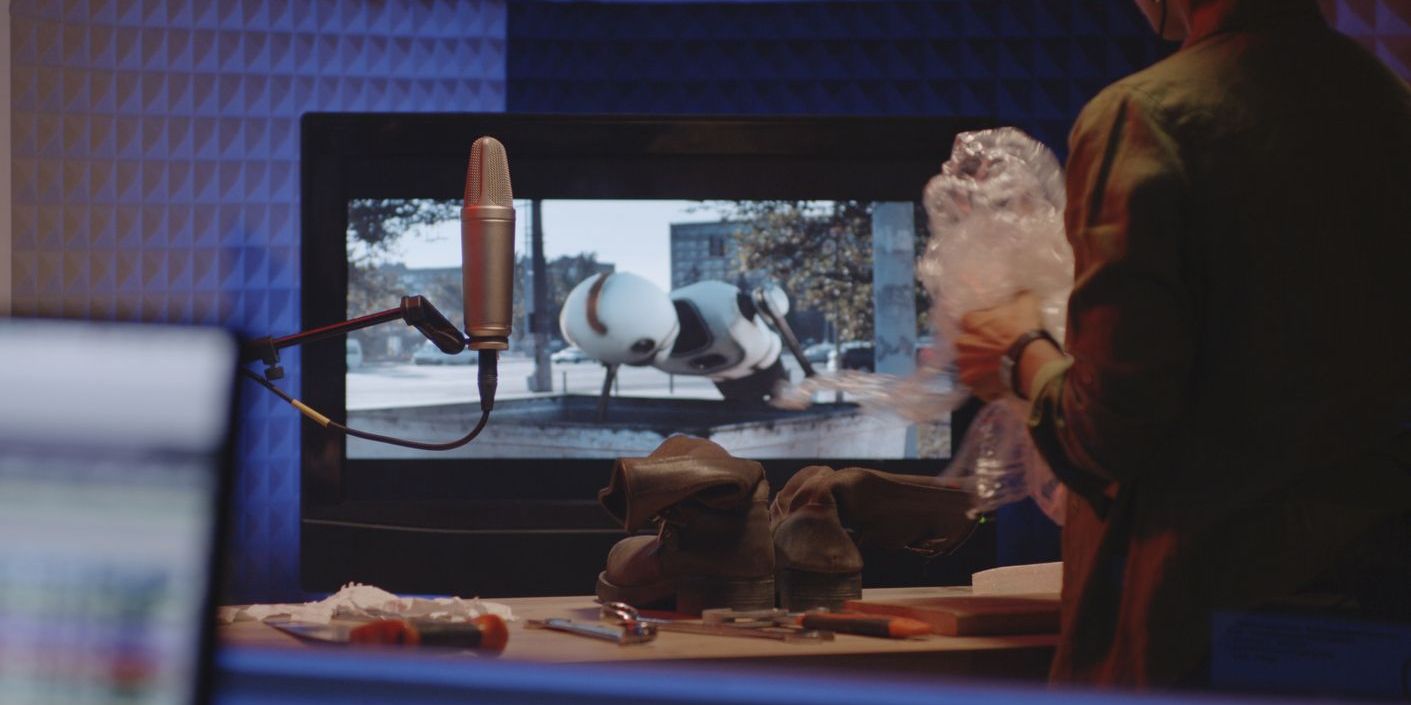What is a Foley Artist?
A Foley artist specializes in creating and recording sound effects to enhance the realism and immersion of film, television, and multimedia productions. Named after Jack Foley, a pioneering sound effects editor in early Hollywood, Foley artists use a variety of props, surfaces, and everyday objects to recreate the sounds of footsteps, movements, and interactions that occur within a scene. These sound effects, known as Foley, are recorded in a controlled studio environment and synchronized with the visual action on screen to create a seamless and believable auditory experience for audiences.
What does a Foley Artist do?

Duties and Responsibilities
The duties and responsibilities of a Foley artist revolve around creating and recording sound effects to enhance the auditory experience of film, television, and multimedia productions:
- Sound Effect Creation: Foley artists are responsible for creating and recording sound effects that mimic real-world actions, movements, and interactions occurring within a scene. They use a variety of props, surfaces, and objects to replicate the sounds of footsteps, clothing rustling, door creaks, and other environmental noises.
- Synchronization and Timing: Foley artists work closely with directors, sound designers, and editors to synchronize sound effects with the visual action on screen. They carefully time their movements and sound cues to match the timing and pacing of the scene, ensuring that the Foley sounds seamlessly integrate with the dialogue, music, and other audio elements. Foley artists may use visual cues, script notes, and reference footage to accurately time their performances and achieve precise synchronization with the on-screen action.
- Collaboration and Communication: Foley artists collaborate closely with members of the production team, including directors, sound designers, editors, and fellow Foley artists, to achieve the desired auditory effects and enhance the storytelling of the production. They make adjustments to their performances as needed to meet the requirements and expectations of the production.
- Equipment Management: Foley artists are responsible for maintaining and operating the equipment used in the Foley recording process, including microphones, recording devices, and playback systems. They ensure that recording equipment is set up properly, calibrated for optimal sound quality, and ready to capture high-fidelity audio recordings. Foley artists may also assist with the selection and setup of props, surfaces, and Foley pits used in the recording studio to create specific sound effects.
Types of Foley Artists
Foley artists can specialize in various types of sound effects creation and recording, depending on their expertise and the needs of the production. Here are some common types of Foley artists:
- Clothing Foley Artist: Clothing Foley artists focus on creating sound effects for fabric movements, such as rustling clothes, swishing skirts, or jangling jewelry. They use various props and materials to simulate different types of garments and textures, adding depth and realism to character movements and actions.
- Creature Foley Artist: Creature Foley artists specialize in creating sound effects for non-human characters, animals, or creatures featured in film, television, or animation. They use their creativity and imagination to produce unique and expressive vocalizations, movements, and behaviors for fictional or fantastical creatures, bringing them to life through sound.
- Environmental Foley Artist: Environmental Foley artists focus on creating sound effects for ambient background noises and environmental elements within a scene. They use various techniques to replicate sounds such as wind, rain, thunder, traffic, or natural habitats, adding depth and atmosphere to the audio mix and enhancing the realism of the setting.
- Footsteps Foley Artist: Footsteps Foley artists specialize in creating realistic footsteps sounds for characters moving on different surfaces such as hardwood floors, concrete, gravel, or grass. They carefully synchronize their footsteps with the movements of actors on screen, ensuring that the sound matches the character's gait, speed, and intensity.
- Props Foley Artist: Props Foley artists specialize in creating sound effects for handling and interacting with objects and props within a scene. They use a wide range of props and objects to replicate sounds such as opening doors, rattling keys, pouring liquids, or handling weapons, adding detail and authenticity to the audio track.
- Special Effects Foley Artist: Special effects Foley artists specialize in creating dynamic and impactful sound effects for action sequences, fight scenes, or special effects shots within a production. They use a combination of props, materials, and techniques to produce sounds such as explosions, gunfire, crashes, or other high-intensity effects, adding excitement and energy to the audio track.
Foley artists have distinct personalities. Think you might match up? Take the free career test to find out if foley artist is one of your top career matches. Take the free test now Learn more about the career test
What is the workplace of a Foley Artist like?
The workplace of a Foley artist typically consists of a specially designed recording studio known as a Foley stage or Foley pit. These studios are equipped with a variety of props, surfaces, and recording equipment needed to create and capture sound effects for film, television, and multimedia productions. Foley stages are often acoustically treated to minimize external noise and provide a controlled environment for recording high-quality audio.
Within the Foley stage, there are typically various surfaces and areas known as Foley pits, which are used to simulate different types of terrain and environments. These pits may include surfaces such as hardwood floors, gravel paths, concrete slabs, or grassy areas, allowing Foley artists to replicate footsteps and movements on a variety of surfaces. Additionally, the Foley stage may be equipped with props, clothing racks, and other accessories to facilitate the creation of sound effects for handling objects, clothing, and other props within a scene.
Foley artists work collaboratively with directors, sound designers, and other members of the production team to create and record sound effects that enhance the auditory experience of a production. They may receive direction and guidance from the director or sound designer regarding the specific sounds needed for a scene, as well as feedback and adjustments based on performance and recording quality.